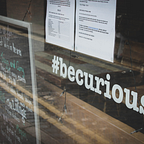Baby Yoda in Space!
Within two decades of its operation, SpaceX became the first private firm to send astronauts into space.
On November 15, 2020, with NASA astronauts Michael Hopkins, Victor Glover, and Shannon Walker, and Soichi Noguchi of the Japan Aerospace Exploration Agency (JAXA), the SpaceX Falcon 9 rocket propelled the Crew Dragon spacecraft into orbit to begin a six-month science mission aboard the space station. They took a Baby Yoda as a “zero-g indicator”, the purpose behind this was to ensure astronauts know that they really are in free-fall prior to unstrapping. In the course of a six-month stay aboard the orbital laboratory, the team will perform science and maintenance and will return in spring 2021.
“Exploration requires resilience. And so that name was a reflection of what we’ve seen from our teammates and our partners that we work at SpaceX, at NASA, and all of our international partners that have helped to train and to get us this far and this close to launch.” - Victor Glover
And the astronauts named their capsule ‘Resilience’.
NASA is planning to hand over space station flights to private companies like SpaceX and Boeing. SpaceX has created the Crew Dragon to send astronauts to the International Space Station. It’s a capsule design — just like the Apollo command modules that carried astronauts to the Moon. From launch up until shortly before re-entry, the capsule is attached to a section called the trunk, which has solar panels, heat-removal radiators, cargo room, and fins to provide stability during emergency aborts. Together, the capsule and trunk measure about 8.1m (26.7ft) long, and 4m in diameter (13ft).
The Crew Dragon is fitted with 16 orbiting Draco thrusters to steer the ship. The capsule has a launch escape system (LES) consisting of eight SuperDraco engines that each generate 16,000 pounds of force if something goes wrong during lift-off. The LES separates Crew Dragon easily from its rocket.
The spacesuits worn by astronauts are one of the major talking points of the Crew Dragon. Sleek, tailored outfits contrast with previous designs. Their main objective, however, remains the same as guarding crew members from depressurization where the capsule loses air.
After the completion of the space shuttle program in 2011, NASA has relied on the Russian Space Program to send its astronauts to the space station. In order to send their astronauts to the ISS in 2019, NASA paid more than 80 million USD per seat of Russia’s Soyuz spacecraft. SpaceX successfully deployed its “Crew Dragon” spacecraft to the ISS without a crew in 2019.
Elon Musk says human spaceflight has always been a fundamental aim for his groundbreaking venture, SpaceX. The entrepreneur fulfilled that goal on Saturday, 30th May 2020, when the Crew Dragon spacecraft took two NASA astronauts Doug Hurley and Bob Behnken into orbit for a space station or an ISS rendezvous. Since the retirement of the shuttle in 2011, it has become the first crewed spacecraft to fly from US soil. Shortly thereafter, the second crewed mission started on 15th November 2020.
Elon Musk has long spoken that in 2002 he founded SpaceX specifically to help mankind colonize Mars and that the company is already developing and testing Starship prototypes, a vehicle built to make this possible. Now it’s gonna be really exciting to see SpaceX accomplish this soon!
